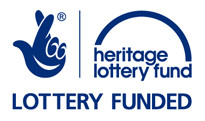- Transcription
- Comments (0) Change font
If columns/tables do not appear straight, change font
To John Ibbetson Esq. Farnacres 19th September 1775
Sir
Inclosed we transmit the Years Account for Langley Lead Mill. The space of time it comprehends is somewhat more than a Year being from the 30 April 1774 to & with the 10th June 1775; and tho' the time thus comprehended is more than a Year, yet nothing more of Business was done than the Smelting of the Duty Ore raised within the year to which it appertains. The reason why it could not be finished sooner than the 10th of June was owing to the Business being retarded by the cutting of the Bellows, & at the same time an alteration in the Mechanism of the Mill from the common mode, which in the late dry Season has been attended with a remarkable good effect and at the same time the making Cupolas in each of the Mills and in the Refinery for the more effectual ventilating of the same, have all been included in the current Expence of the Year, yet the Board will see that the produce of this Year has been very considerable and more so than can be expected in common.
We also beg leave to acquaint the Board that the new Ore Hearth erected at Langley Mill this Year by order of the Board has now been at work upwards of two Months and answers so very well, that to avoid the effects of contention among the Smelters who should work her, they are all appointed to work there turn and turn about. The Bellows of this Hearth are almost one third less than our former ones and cost less by £5-15- from the Maker. When we began this work we were afraid of any material deviations from the common practice, lest a want of success owing to other matters, should be ascribed to that; or that something that we were not aware of should cause errors to arise from such deviations; but having availed ourselves of the experience we have by degrees obtained in the Smelting Business, we have been enabled to improve upon our first Plans. This new Hearth is adapted to and worked by the Refinery Wheel and the Plan so laid out as to admit of a second additional Hearth in case (as it probably may) it shall hereafter appear to be necessary. The Refinery Wheel now carries not only the two pair of Refinery Bellows and the new Hearth but the Stampers also when the Upper Mill is worked with a full portion of Water. The smallness of our loss in Refining & Reducing also shows that the Work in every part of it is carried on to the greatest advantage, as a fourteenth part has been looked upon as the least loss to be expected. With respect to the price at which we take the Duty Ore, we have always done it by one rule, that is we found what had been the price of Ore in proportion to the price of Lead at the Newcastle Markett, upon the average of 25 Years, preceding our commencement; and according to the price of Lead at the time of Year that the Duty Ore has generally been advertised to be sold, which is nearly the same as the commencement of our years Work, we have taken the Ore in proportion; paying however a regard to the circumstance of Lead being at that time a rising or a falling commodity, and it has been only twice that we have had occasion to make any difference on this Account, Viz, in the Year 1772, Lead having been very rapidly lowered in price, we took the Dues at a price under par, and the last Year Lead appearing to be upon the rise, the Dues have been taken above par in the present <Quarter.>
After the erection of the Lead Mill with its first conveniences, we found a very considerable addition necessary for the depositing of Peats under cover, and therefore, with the approbation of the Board (& considering Peats when dry as a light kind of matter) we erected a Peat House of much more width and height than had been usual in order that it might hold as many as possible with as little Building; but it so happened in the course of the Work, that it was filled with Peats before it was Slated and the Walls being then green the weight of the Peats produced an unexpected effect, Viz in very sensibly bulging one of the Gabels, this however when the Walls were dry, we expected would go no further; yet we find on every time it has been filled with Peats, the weight of them has produced a sensible effect, and as we likewise find, that the filling it with Peats so high is both troublesome and expensive, and have lately contrived a new method of preserving Peats by Thatching them out of Doors, we propose with the approbation of the Board, before the Peat House is filled the next Year, to lower the Walls thereof, about 6 feet, by which means the Walls becoming relatively stronger, and the weight less, we apprehend we shall have no further difficulty. The taking off the Roof in order to do this, lowering the Walls, and reslating we estimate to come to £21-15-5. We are
Sir Your most Obed Servts
N W Junr J S
PS. We also inclose an Account showing the Quantity of Ore remaining at the Mines after finishing the Carriage in 1774.

